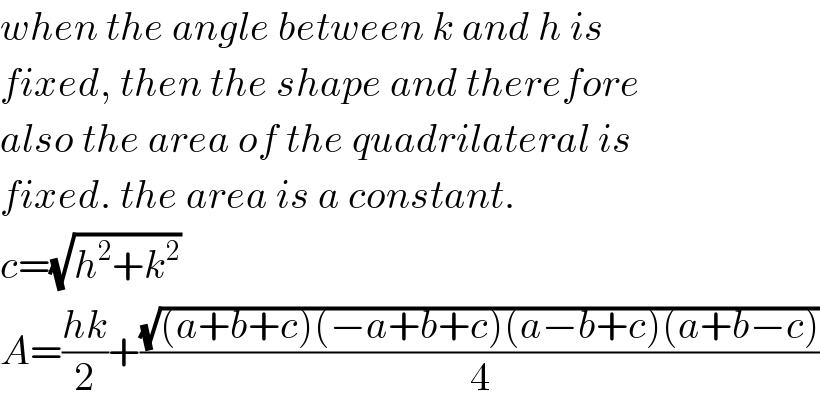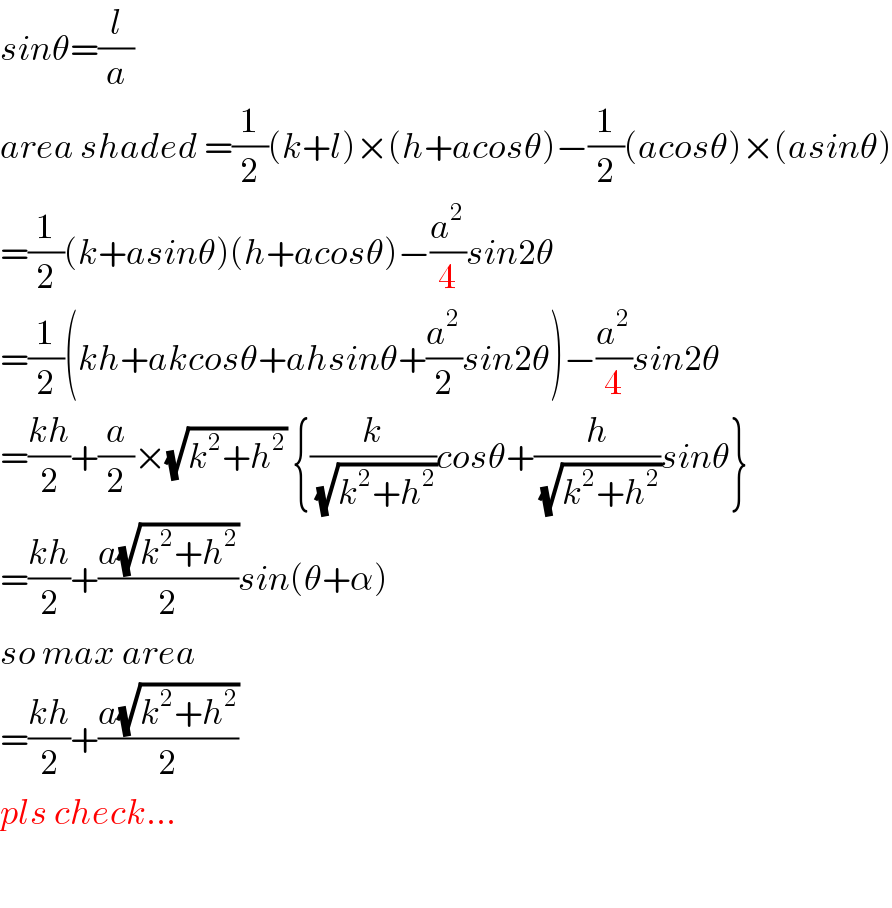
Question and Answers Forum
Question Number 50640 by ajfour last updated on 18/Dec/18

Commented by mr W last updated on 18/Dec/18

Commented by ajfour last updated on 18/Dec/18

Answered by tanmay.chaudhury50@gmail.com last updated on 18/Dec/18

| ||
Question and Answers Forum | ||
Question Number 50640 by ajfour last updated on 18/Dec/18 | ||
 | ||
Commented by mr W last updated on 18/Dec/18 | ||
 | ||
Commented by ajfour last updated on 18/Dec/18 | ||
 | ||
Answered by tanmay.chaudhury50@gmail.com last updated on 18/Dec/18 | ||
 | ||
| ||